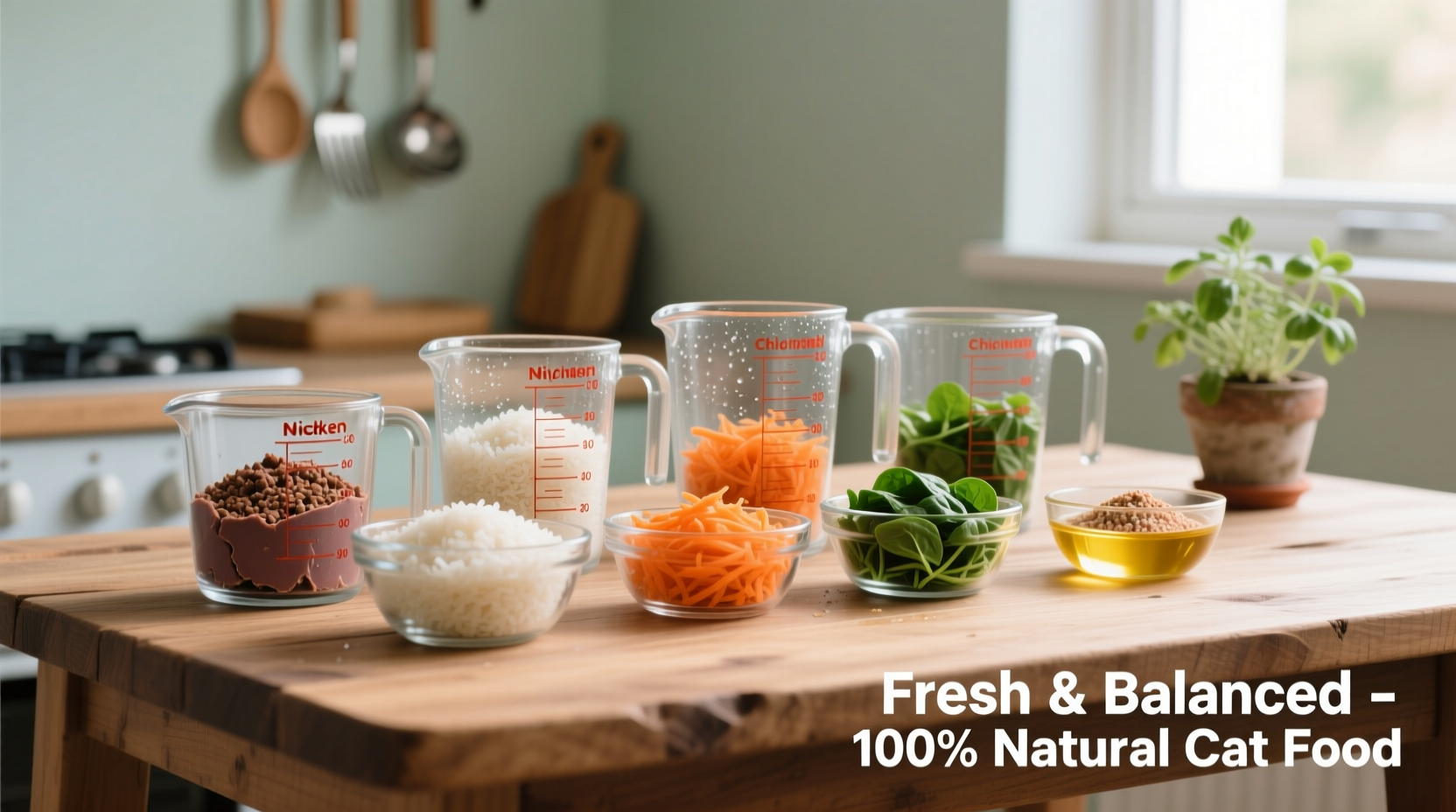Why Proper Nutrition Matters for Cats
Cats are obligate carnivores with unique nutritional requirements that differ significantly from dogs or humans. Unlike omnivores, cats require specific nutrients like taurine, arachidonic acid, and preformed vitamin A that they cannot synthesize sufficiently on their own. Improperly formulated homemade diets cause 85% of nutritional deficiencies in cats, according to the American College of Veterinary Nutrition.
| Nutrient | Commercial Complete Food | Homemade (Improper) | Homemade (Proper) |
|---|---|---|---|
| Taurine | Optimal levels | Often deficient | Supplemented to requirement |
| Calcium:Phosphorus | 1.2:1 ratio | Imbalanced (often low calcium) | Measured 1.1-1.3:1 ratio |
| Vitamin E | Adequate | Frequently insufficient | Supplemented as needed |
This nutritional comparison shows why how to make cat food properly requires precise formulation. The Association of American Feed Control Officials (AAFCO) has established minimum requirements for all essential nutrients in complete cat foods. Without meeting these standards, homemade diets risk causing serious health issues including dilated cardiomyopathy from taurine deficiency.
Essential Preparations Before Starting
Before attempting to make cat food at home, consult a board-certified veterinary nutritionist. The American College of Veterinary Nutrition provides a directory of specialists who can formulate balanced recipes for your cat's specific needs. Never rely solely on internet recipes without professional validation.
Essential equipment includes:
- Food scale accurate to 0.1 grams
- pH test strips for monitoring acidity
- Airtight storage containers
- Freezer-safe portion containers
Step-by-Step Recipe Development Process
Creating a balanced homemade cat food recipe involves precise calculations. The following basic formula provides 100% of AAFCO nutrient requirements for adult cats:
- Protein source (70% of total recipe): Use muscle meat like chicken breast, turkey, or lean beef. Never use only liver or other organ meats.
- Organ meats (10%): Include 5% liver and 5% other secreting organs like kidney.
- Supplement mix (20%): This critical component must include calcium carbonate, taurine, and a complete vitamin-mineral premix.
For every 100g of meat mixture, add:
- 1.5g calcium carbonate
- 500mg taurine
- 1/4 teaspoon veterinary-formulated vitamin-mineral premix

Preparing Your First Batch
Follow these steps for safe homemade cat food preparation:
- Thaw all ingredients in the refrigerator overnight
- Grind meat and organs together until uniform texture
- Slowly incorporate supplements while mixing
- Portion into 2-3 ounce servings (average adult meal)
- Store immediately in airtight containers
Cooking isn't required for raw diets, but if preparing cooked food, simmer gently at 160°F (71°C) for 15 minutes. Never boil as this destroys essential nutrients. The Veterinary Information Network confirms that proper cooking temperatures maintain nutrient integrity while eliminating pathogens.
Storage and Feeding Guidelines
Refrigerated homemade cat food remains safe for 3-4 days at 40°F (4°C) or below. For longer storage, freeze portions which remain nutritionally stable for 2-3 months. Always thaw frozen food in the refrigerator, never at room temperature.
When transitioning cats to homemade food, follow this timeline:
- Days 1-2: 25% homemade, 75% current food
- Days 3-4: 50% homemade, 50% current food
- Days 5-6: 75% homemade, 25% current food
- Day 7+: 100% homemade food
Monitor your cat's weight, coat condition, and energy levels weekly. Schedule veterinary checkups every 6 months when feeding homemade diets to monitor organ function and nutrient levels.
When Homemade Food Isn't Appropriate
Certain medical conditions require prescription diets that cannot be replicated at home. These include:
- Kidney disease requiring precise phosphorus control
- Urinary tract issues needing specific pH management
- Pancreatitis requiring extremely low-fat formulations
- Food allergies requiring hydrolyzed proteins
The American College of Veterinary Internal Medicine states that 40% of cats with chronic conditions require specialized commercial diets that cannot be safely replicated at home. Always consult your veterinarian before changing diets for cats with health issues.











 浙公网安备
33010002000092号
浙公网安备
33010002000092号 浙B2-20120091-4
浙B2-20120091-4